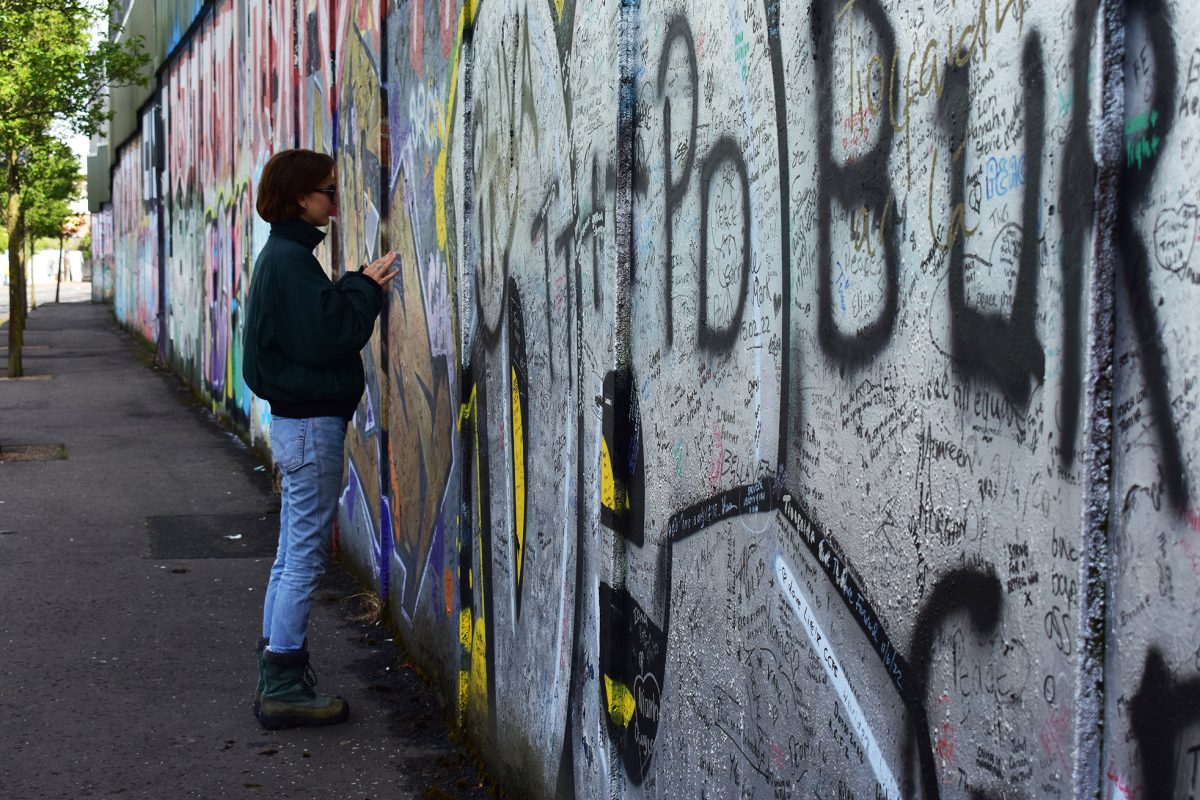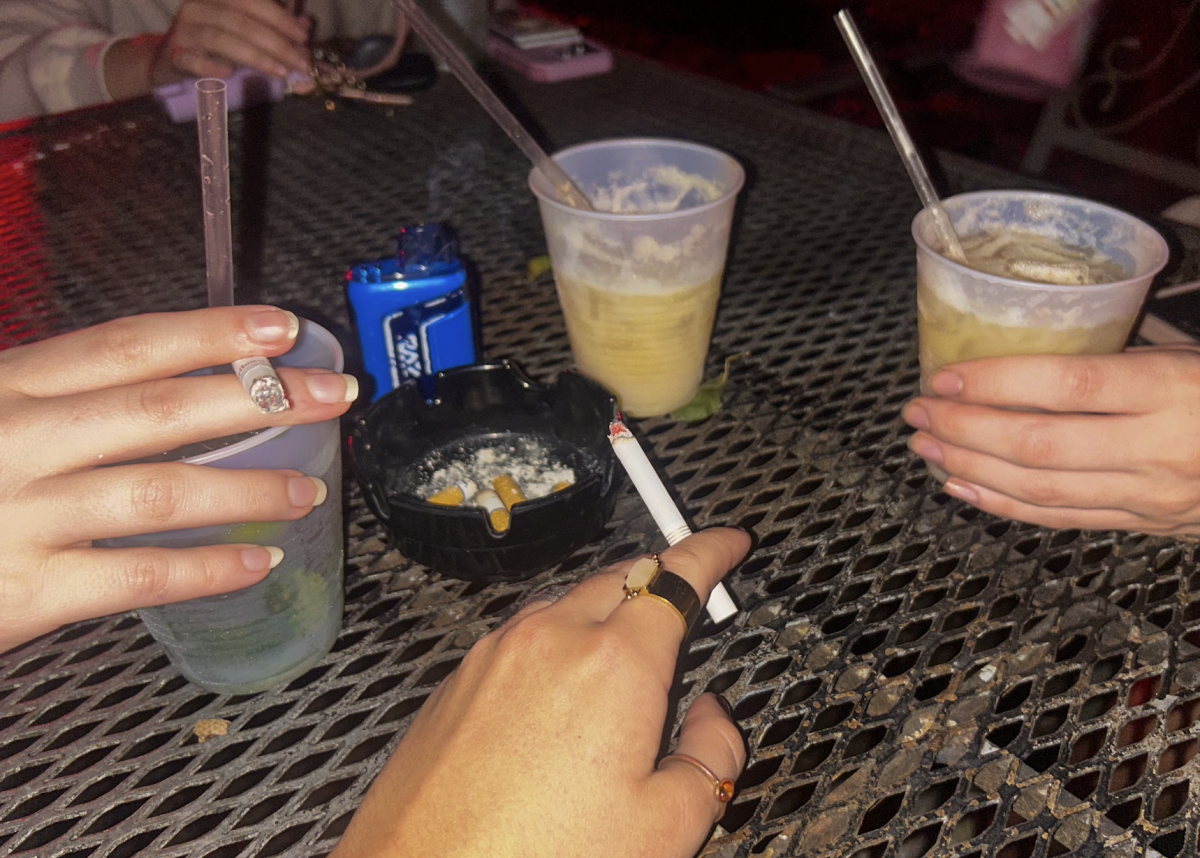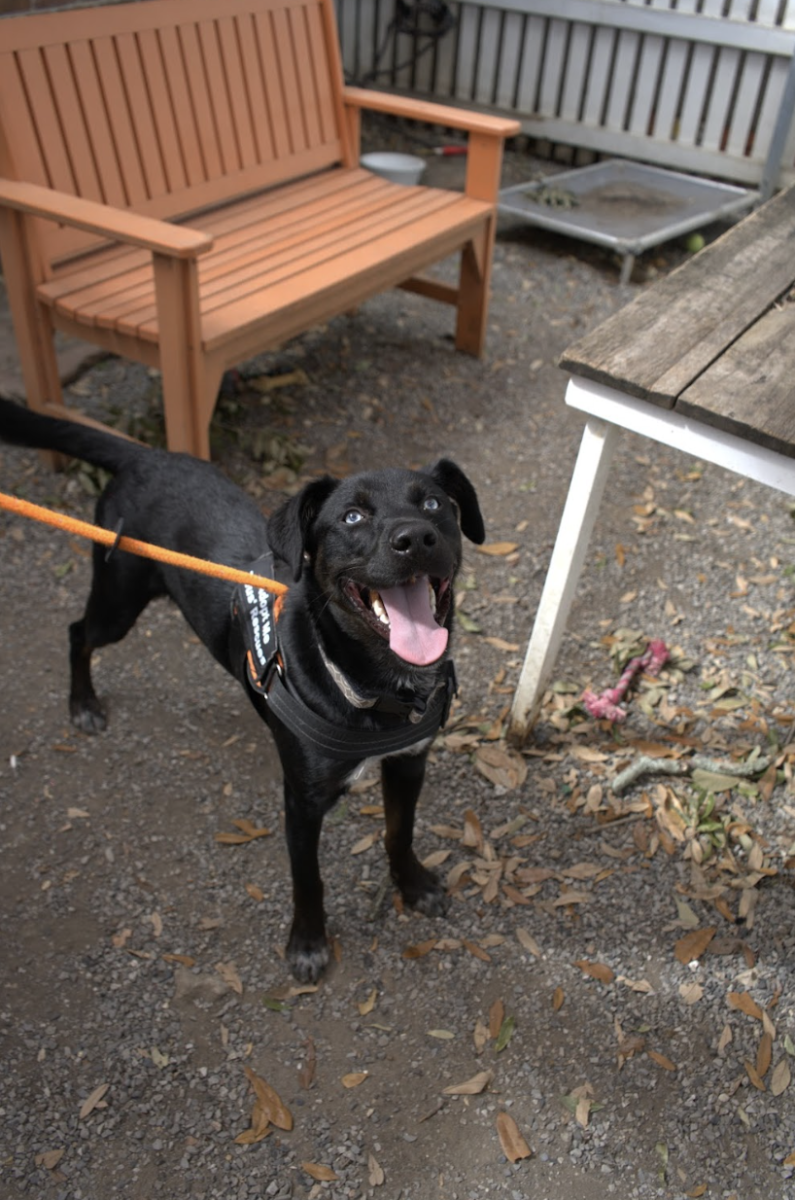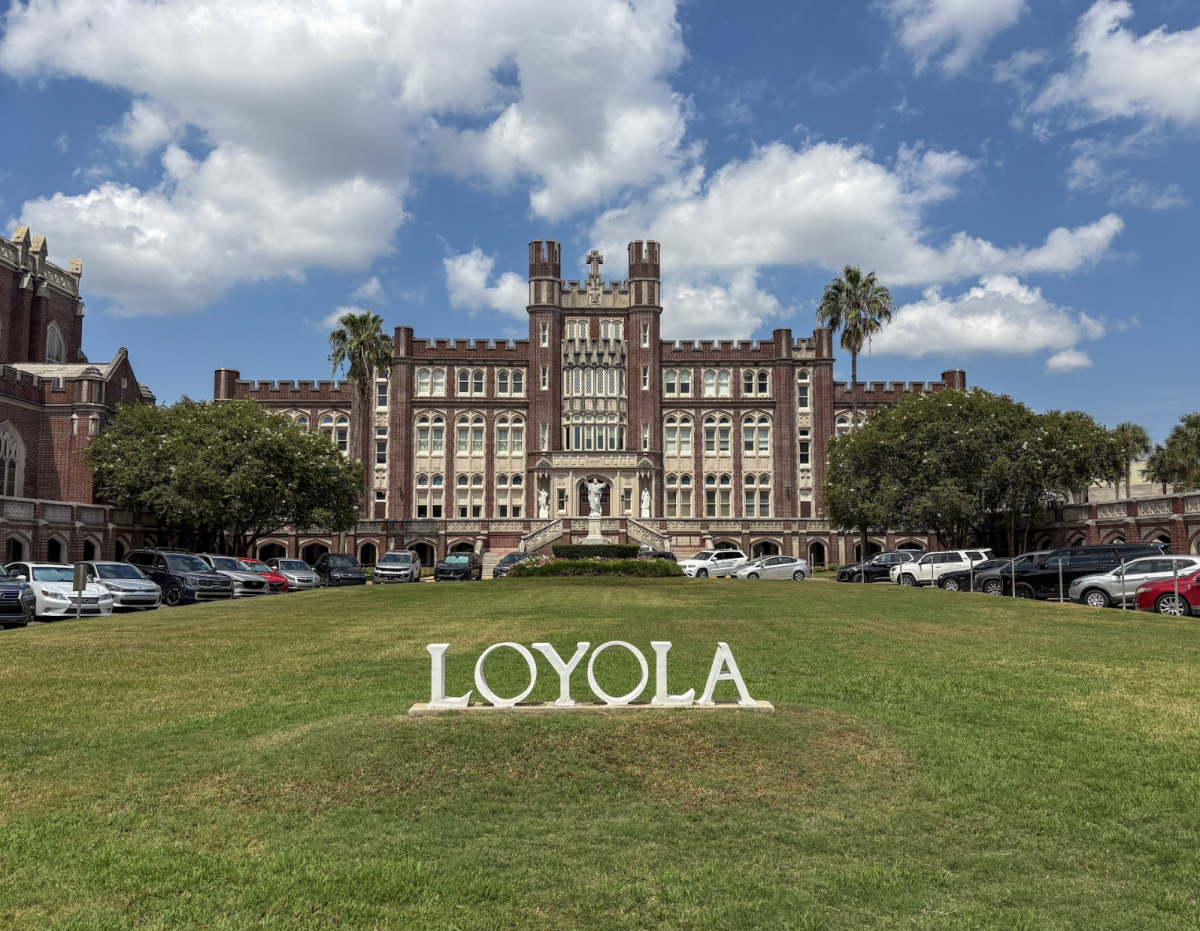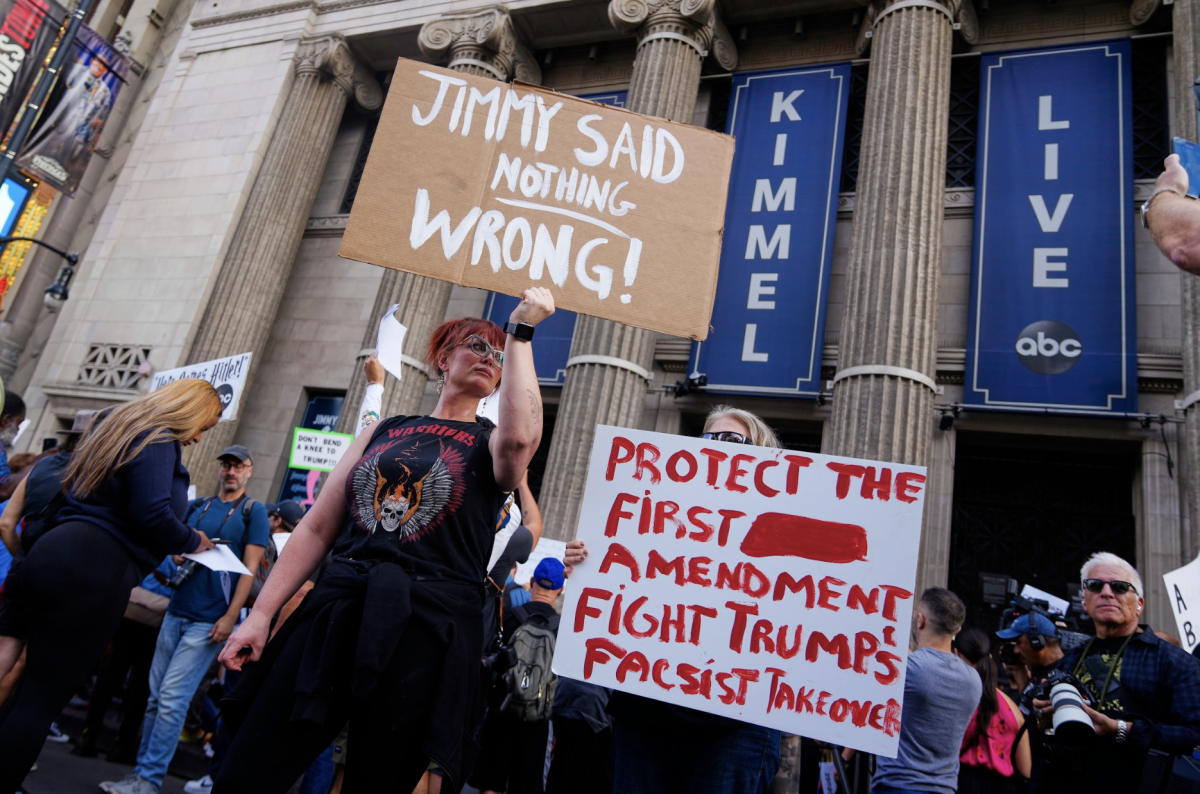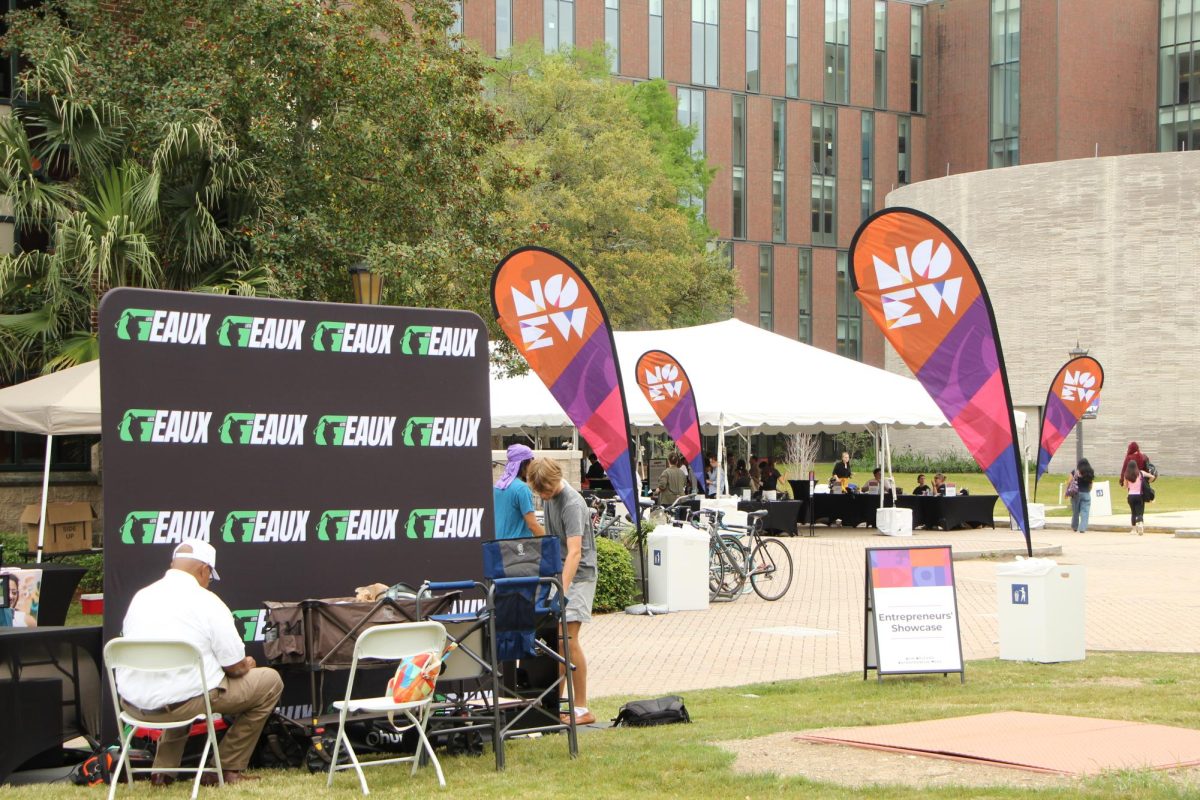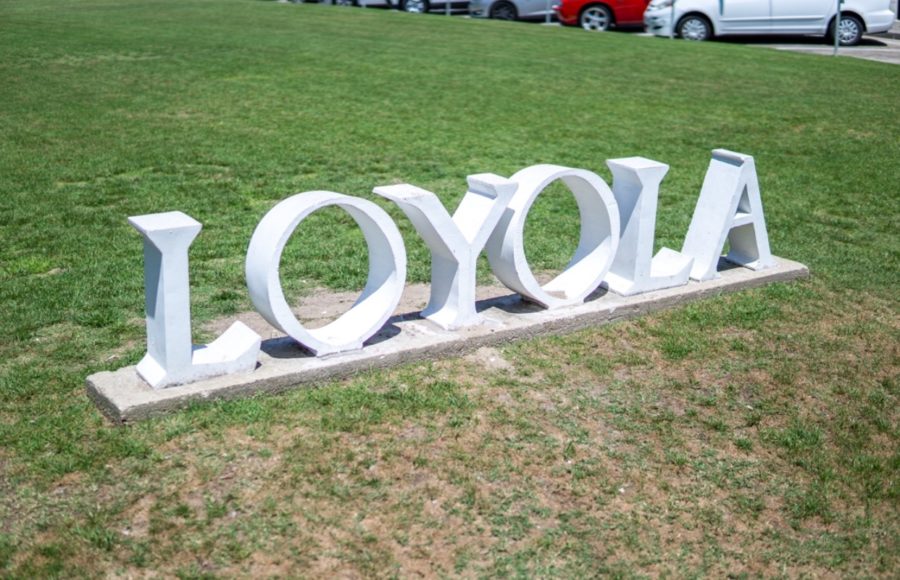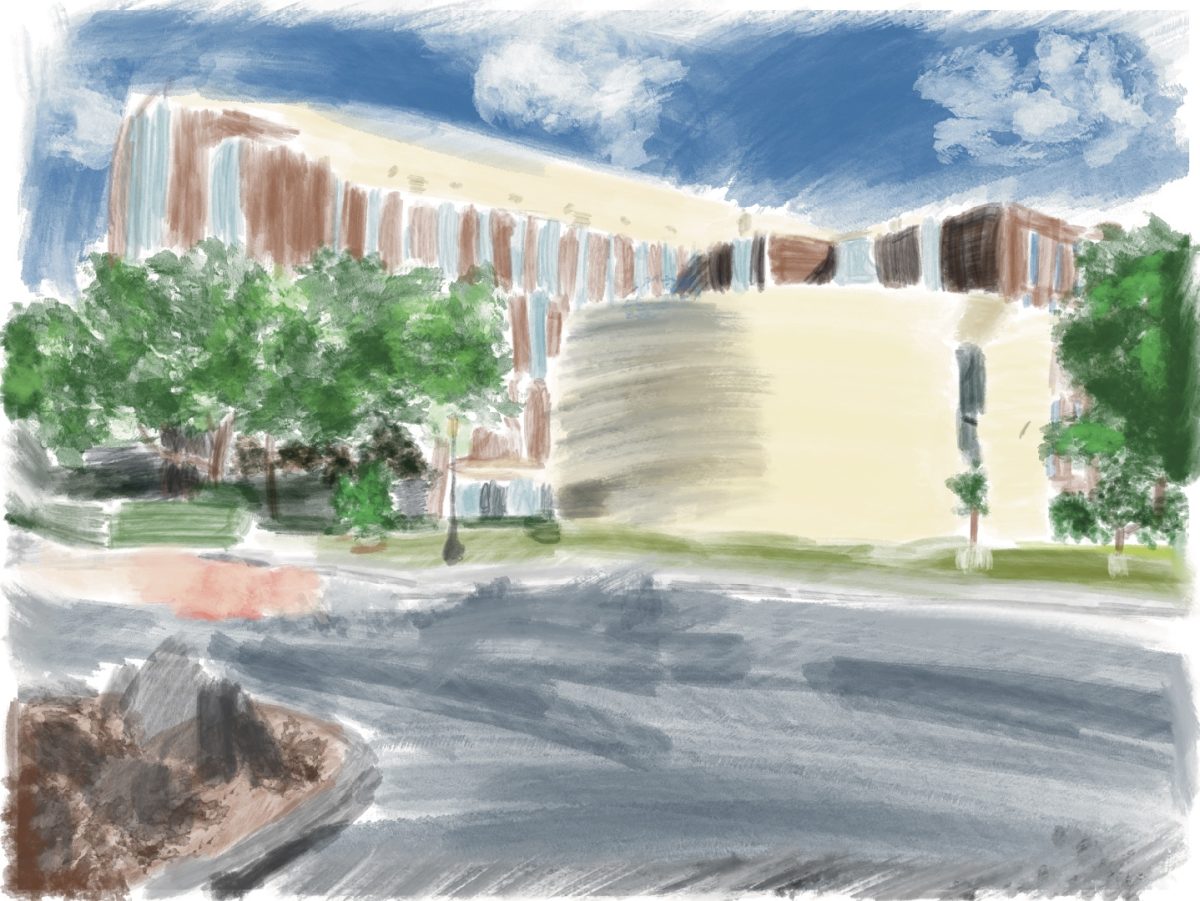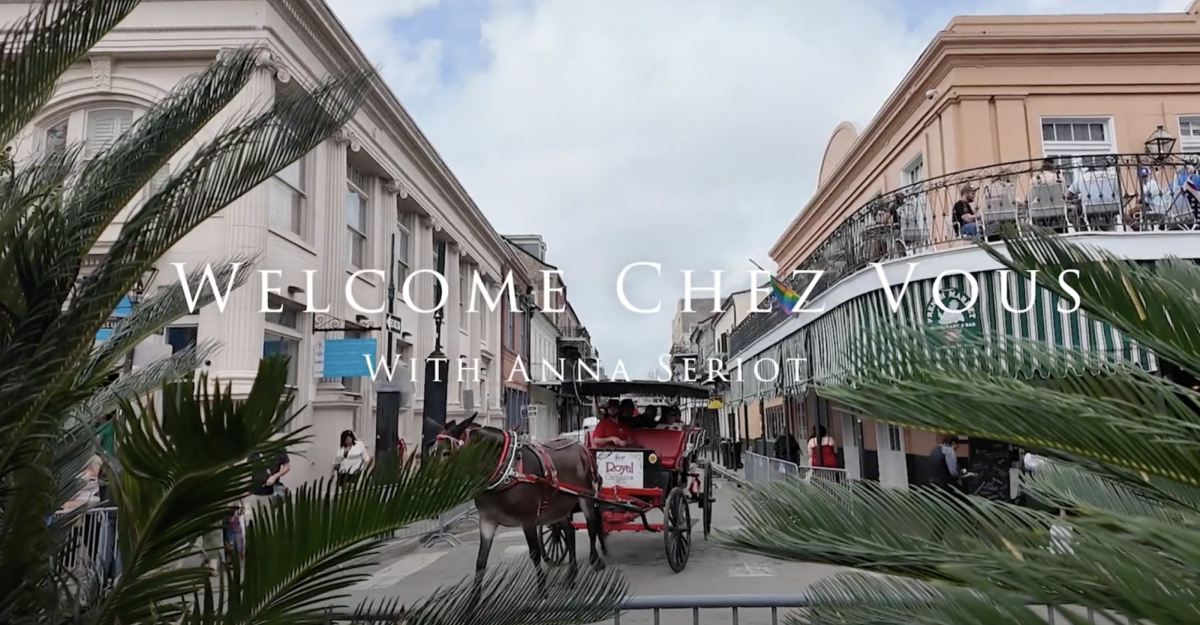Stigma is painted to graffiti. Why is this? Graffiti is seen as delinquency, troublemakers who disrespect their city and people. But graffiti is, in fact, the opposite.
Street art has the capability to illustrate societal, socioeconomic, political, cultural issues, and create communities.
Over the summer, I went on the Loyola Study Abroad Program in Ireland. Graffiti was the first characteristic I noticed entering Northern Ireland. In Belfast, graffiti art is a manifesto of political and religious division.
The Peace Wall separates a Protestant neighborhood from the majority Catholic community. It is smothered in graffiti and quotes, charged with peace and justice, from people all over the world.
“I came from a land down under,”
“One world, one people,”
“To the world we dream about and the one we live in now.”
In addition, I noticed a wall with a large red, white, and blue British flag with “U.V.F” (Ulster Volunteer Force) painted in large black letters, supporting the loyalists, British forces. There were anti-fascist pieces that stated, “Not only just books/weapons against fascism.” There was pro-communist art posted on poles, “Are YOU a communist?”
A huge mural with, “There can never be peace in Ireland until the foreign, oppressive British presence is removed, leaving all the Irish people as a unit” stood out from the entire brick neighborhood.
Art is an outlet for citizens to express their political identities, their heritage and pasts, and their desires. Though it is “illegal” Irish police do not enforce punishment, due to the huge importance graffiti holds. They could not stop it if they tried.
In my experience, New Orleans graffiti is a symbol of cultural expression, and artistic release and also a political motif as in Ireland. According to Country Roads Magazine, “In New Orleans during the early 1980s, graffiti writers emerged, and created a style and influence that would continue to evolve during the ensuing decades. Often the subject of controversy, graffiti draws attention to urban blight and gentrification, the line between creation and destruction, and the social conditions that allow and encourage this subversive lifestyle.”
An anonymous New Orleans artist told me the story surrounding their graffiti journey.
They started graffiti two years ago. Today their hope is to be “seen by some and noticed by few.”
“To be a graffiti writer means you really want to spread a message for the public to see and are willing to take risks,” they said. “Graffiti is a sign of the time to see what people are thinking.” They said there is a lot of work in the French Quarter that relates to financial heartache. They said it is vital to contribute positivity for this reason.
While their mother was sick, they decided to do a piece in homage to her of her name. Lettering is a part of their graffiti portfolio, so names, real or fictional, are sprayed often. They sent her a picture and she loved it and encouraged them to continue.
Fonts and lettering are ways for an artist to express their signature style or their “tag.” A standard tag is bold and in capital letters, often seen as the skeleton of more detailed pieces. Straight letters are intentionally, extremely legible and large.
A hollow style suggests a bubbly-shape, on a wider scale without coloring. A throw-up is a level above a tag with shading, multiple colors, and deep dimensions, but is not considered an entire piece. A wildstyle is a full piece with intricate lettering, biomechanic elements, and lots of pigment.
In April, when the interview took place, they had completed over 160 pieces.
They said “graffiti is the only holy art form that is not based on monetary, capitalistic, transactional dependency.” They see graffiti as the purest art form, despite the stigma surrounding it.
“Graffiti is the life force of metropolitan cities,” they said. “I want people to relate to it”
Exploring with tools to improve their art, wire cutters, gloves, and towels, which are important to get over barbed wire, and a lot of gear is crucial to be successful in graffiti, they said. “I do this for fun, for free, and to brighten up your day.”
Graffiti is a part of the culture, a creative outlet, a fellowship, and a time capsule.
Seeing graffiti has opened their eyes to the insight of “untouchable individuals” and the social conditions New Orleans endures.
They are inspired by the late Freya’s “lady face”, an honorable artist from New Orleans with hundreds of pieces around the city. Her signature lady faces had hair swaying to the left, gauged ears, and long eyelashes, which you’ve probably seen around New Orleans before.
“Pretty sure the graffiti community will make sure those [Freya] faces stay riding,” said an anonymous graffiti lover.
My interviewee learned how to combat fear at the beginning of their graffiti journey.
“The beginning teaches you the fear factor of graffiti because when you don’t wanna get caught you have to be extra cautious,” they said.
Graffiti is not all about vandalism or attention-seeking behavior, it is an art form that showcases the social climate around our city. But not everyone does graffiti for the same reason. The graffiti community uses the word “toy” to describe someone who doesn’t take graffiti seriously, or is doing it for the wrong reasons, they said. By being a toy themselves, in the beginning, they’ve consequently developed a new sense of identity through art.
It is mysterious and anonymous, where you can be yourself. It is a way to create, spread messages, be vulnerable, and share positivity. It is a way to embrace, process, and change the world we live in.
The famous Banksy is an inspiration for many New Orleans artists. My interviewee said they know artists who work with him. There is word on the street that Banksy may have thrown up a new piece near the PoorBoys bar in the Bywater.
Take a look around the city and observe what you see from street art. Ask yourself questions like, “What is this insinuating?” “Have I seen this before?” “How does this make me feel?” “What is the meaning?”
And you will discover new ways of thinking about the city. You will start to notice similarities, signatures, and styles. Perhaps you will even get inspired to make your own.


